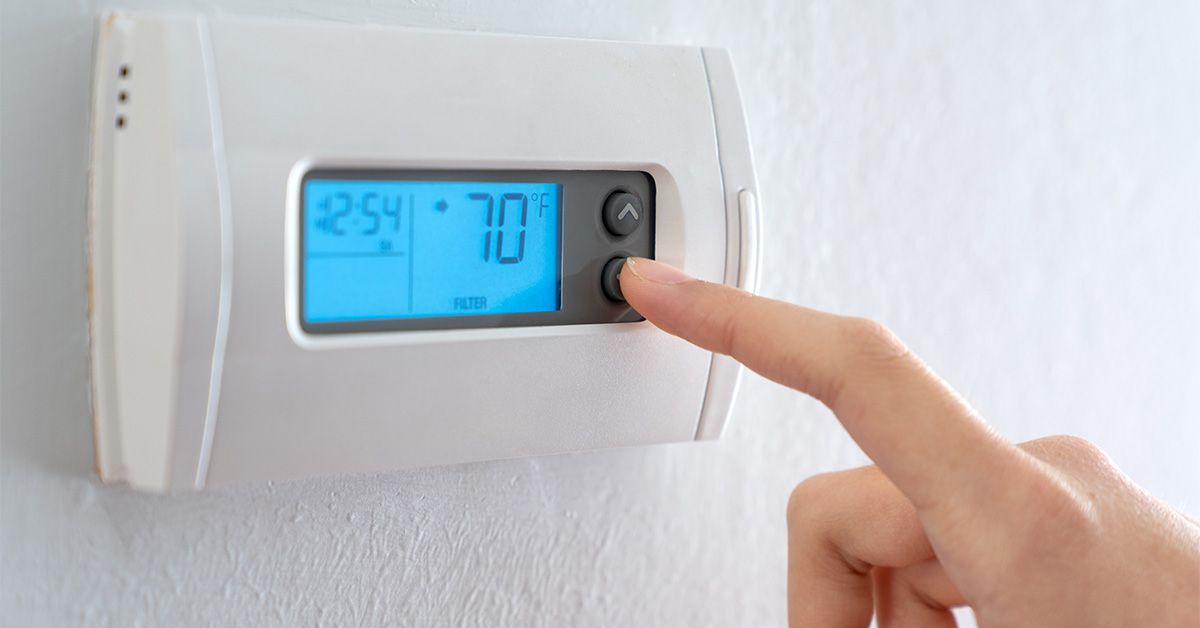Best Thermostat Temperature Settings for Tallahassee’s Summer Heat

With the full brunt of summer’s heat and humidity upon us, you undoubtedly love your air conditioner. However, you probably don’t enjoy the hike in your utility bills that comes with heavy air conditioning use. This begs the question: What is the best thermostat setting for the summer months to keep the household cool without breaking the bank?
Well, the U.S. Department of Energy (DOE) recommends setting the thermostat at 78 degrees during waking hours when home, 82 degrees when you sleep, and 85 degrees when you are away. However, the air conditioning specialists at Tallahassee’s Air Control Heating and Cooling note that you may not feel comfortable using this guidance right away. Let’s take a closer look at the issue.
What You Need to Know About Your Air Conditioner
The first thing you should know about your air conditioner is that it can only cool the indoor air by about 15 to 20 degrees below the outside temperature. Thus, during one of our periodic heat waves, when outdoor temps hit 100 degrees, your AC will struggle to keep your home comfortable no matter what temperature you set the thermostat to. The second thing to know is that setting the thermostat to exceptionally low temperatures will not cool your home any faster than setting it within a normal range. The only impact a low-temperature setting makes is to boost your energy bills.
Find Your Ideal Thermostat Setting
While the 78-degree DOE-recommended thermostat setting for summer is ideal for energy efficiency, it may not be optimal for your household’s comfort. Therefore, Air Control Heating and Cooling recommends you experiment with your settings. If you typically set your thermostat at 72 degrees, try moving it up by one or two degrees and see if you remain sufficiently comfortable. If so, move it up another degree or two the next day to see how it feels, and then repeat the next day as warranted. Meanwhile, you should also conduct a similar experiment with your overnight settings.
You can do several things to help improve your sense of cool while finding your ideal thermostat settings. The following tips may help you comfortably reach the DOE’s recommended setting.
Keep Humidity Under Control
High indoor humidity levels can make your home feel hotter than it is, and keeping levels within the 45-55% range can help keep your home cool, dry, and comfortable. Your AC system naturally dehumidifies your home as part of the cooling process, but you can boost its dehumidification power by installing a dehumidifier directly to your existing system. Additionally, for optimal dehumidification, you should keep your AC system in peak operational condition, which you can easily do by joining our Air Control Club, which offers regularly scheduled maintenance, inspections, and other performance-optimization benefits.
Make Use of Ceiling Fans and Curtains and Blinds
Ceiling fans cannot make the indoor air cool like air conditioning, but they sure can help. In fact, a ceiling fan can make the temperature in a room feel up to four degrees cooler, which allows you to increase the thermostat towards that 98-degree DOE recommendation. For the most efficient summertime ceiling fan operation, make sure your fan is set (most fans have a circulation-direction switch) to turn counterclockwise to push the air down for a breezy effect.
While we enjoy the abundant light our summer sun delivers, those rays produce significant heat. Thus, during the heat of the day, practice closing curtains and blinds to prevent those rays from causing ambient heat buildup as they warm interior surfaces.
Best Thermostat Settings When You’re Not Home
When choosing the appropriate thermostat setting when you are away from home, you must consider several important factors. While the DOE-recommended 85 degrees should work for most homeowners, if you have pets in the house during the workday, you may need to lower the temperature to ensure their comfort.
Naturally, you don’t want to spend money on air conditioning when you’re away on vacation, but you probably shouldn’t just turn the AC off while you’re gone. If indoor temperatures rise above 90 degrees, they could impact temperature-sensitive appliances like your refrigerator. Additionally, the high humidity levels that usually accompany our extreme temperatures could stimulate mold and mildew growth while you’re away.
Keep the Cool by Scheduling an AC Tune-Up with the Air Control Team
We trust that our tips on summertime thermostat settings will help you find the optimum indoor temperature at a reasonable price. To ensure the most energy-efficient cooling of your home this summer, schedule an AC tune-up or join our Air Control Club by contacting us at (850) 562-1234.